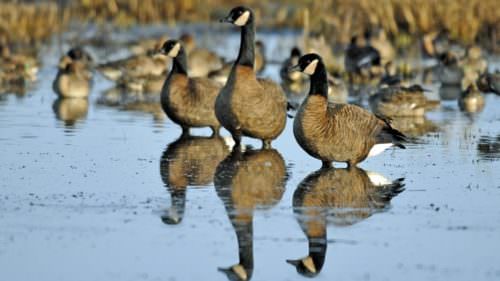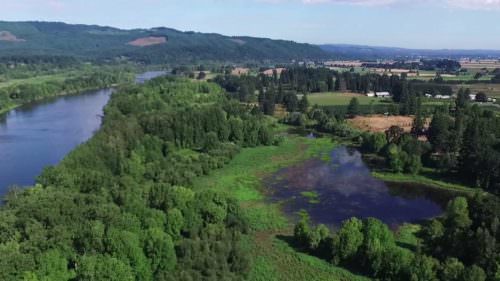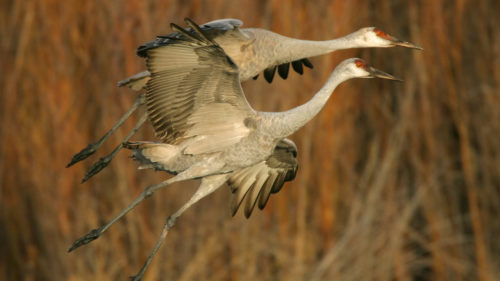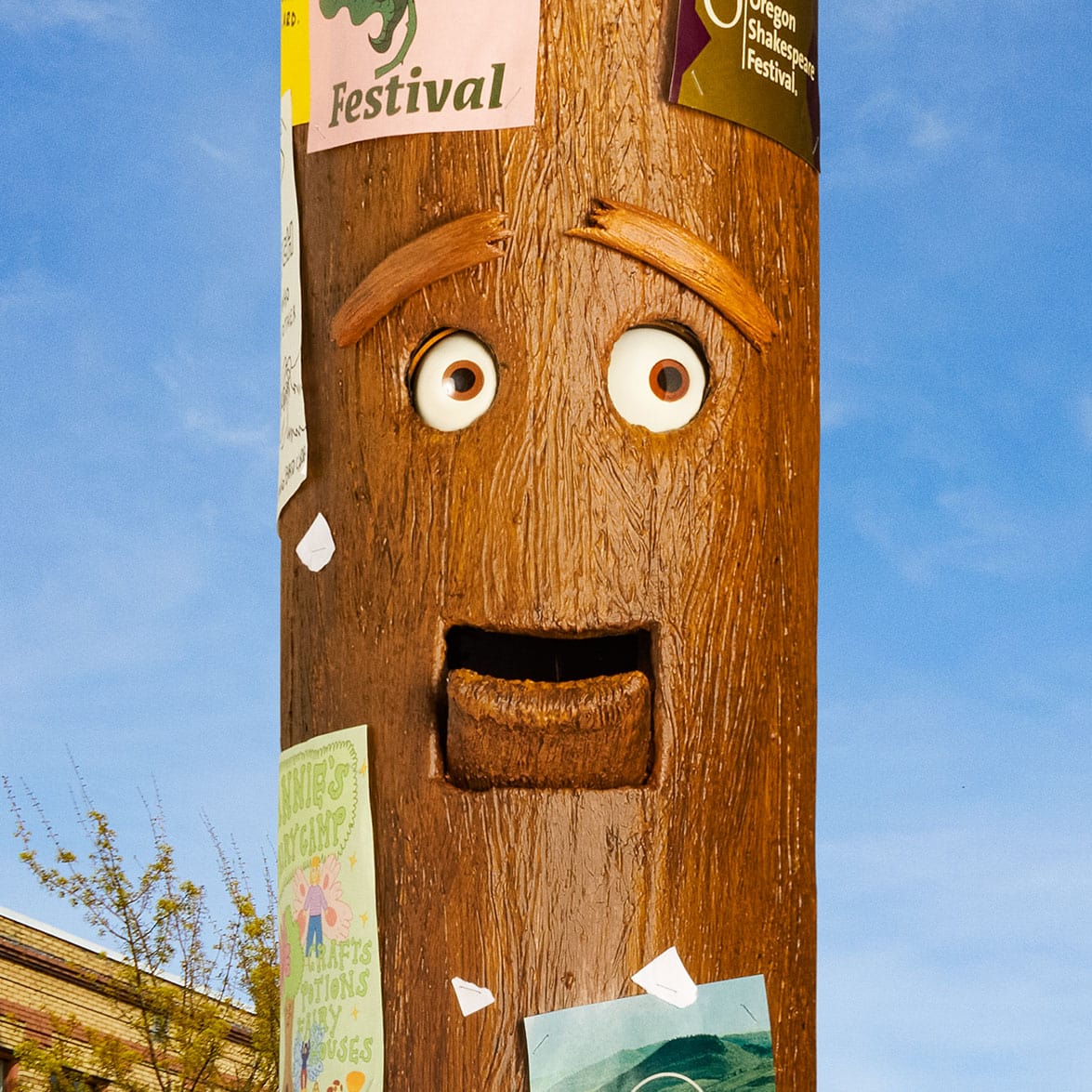Each fall, a feathery invasion drops in to Oregon’s fields and wetlands as a quarter million Canada geese arrive on fixed wings with a rowdy chorus. On the Sauvie Island Wildlife Area, look closely and listen carefully for another bird species that stands head and shoulders above the crowd.
Sandhill cranes are hard to miss and it’s not just their 3-foot height and 6-foot wingspan, noted Asst Wildlife Area Manager, Dan Marvin.
“This is the spot! This is it as far as opportunities to view sandhill cranes goes in the Willamette Valley. The most popular places to look for them on the island are the agricultural fields.”
It’s not only their distinct size, but adult cranes also have a striking red color across their faces.
“Adults have a bright red crown – a bright red forehead really – and the chicks don’t have that. In fact, the chicks look a lot paler in the face.”
There’s an even more distinct feature according to Gary Ivey – Oregon’s sandhill crane expert. He said that the sandhill sounds are unlike anything you’ve ever heard:
“Well, it’s kind of a loud trumpet that has kind of a trill to it. You can hear it from a long way off and the flocks use it as a contact call. Often, when they are migrating you will hear that call – even when they’re almost invisible so high up. Once you hear the sound you never forget it.”
The big birds fly to Sauvie Island from as far away as SE Alaska and British Columbia and they spend the winter lounging across the refuge grounds.
The peak of their arrival is mid-October when up to 4,000 birds show up on Sauvie Island. Most continue flying further south, but approximately a quarter of theme stay here all winter long
The best time to see them is during the early morning or late afternoon when birds are actively feeding in harvested grain fields.
Be sure to bring good optics too – either binoculars or a spotting scope – each will make a big difference enjoying the view to the birds.
The “view” to all Oregon wildlife has recently improved according to Rick Hargrave – a spokesperson for the Oregon Department of Fish and Wildlife.
He said that a recent survey showed nearly two million people spend more than a billion dollars each year to travel and watch Oregon wildlife.
“We knew right then that we needed to get something out there that will make viewing a little easier for folks to enjoy and also highlight the wildlife that the department oversees and manages.”
The new interactive Oregon Wildlife Viewing Map will help you see more of Oregon’s fish and wildlife species. It is a Google-based map that details 235 great places to see wildlife in the state.
It will help you discover where to see bald eagles or sage grouse or migrating snow geese. It will point you to good sites to view Oregon’s largest mammals including migrating gray whales or high desert antelope or Rocky Mountain Elk
Hargrave said the map’s sites reach into each corner of the state.
“The state agency manages fish and wildlife for the people of Oregon and we want people to understand the connections between wildlife viewing, conservation and the habitat. Without an emphasis on all of those, you’re not going to see the variety of wildlife that we have in this great state.”
You’ve plenty of time to enjoy the sandhill show and hear their haunting calls. Sauvie Island Wildlife Area is their winter home through winter and the colorful birds will return north to their breeding and nesting grounds in April.



